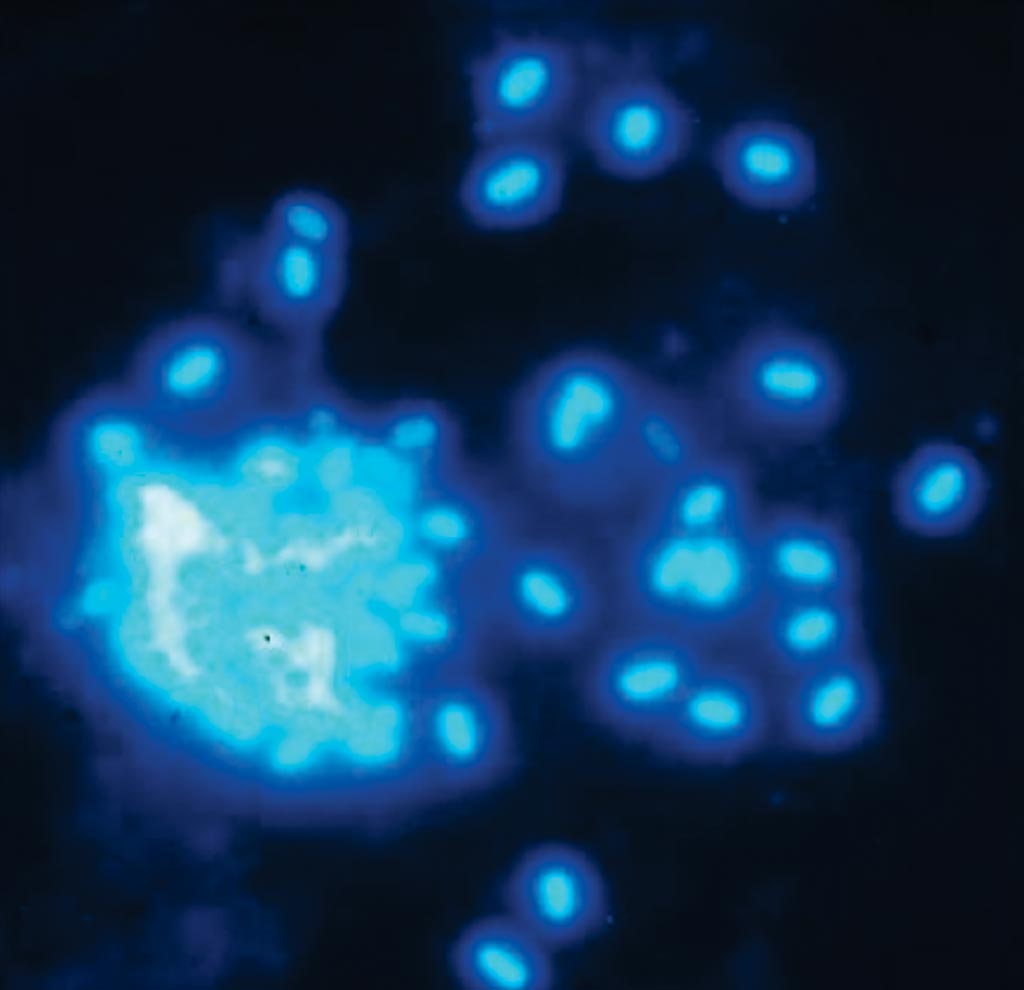Molecular Diagnostics


Non-Invasive Prenatal Sequencing Designed for Multiple Mendelian Monogenic Disorders
Current non-invasive prenatal screening is targeted toward the detection of chromosomal abnormalities in the fetus. However, screening for many dominant monogenic disorders associated with de novo mutations is not available, despite their relatively high incidence. More...14 Feb 2019

Dengue Severity Predicted by Gene Expression Signature
About 400 million individuals annually are infected with any of the four dengue virus (DENV) serotypes and although the majority of symptomatic individuals present with acute dengue fever, a fraction, between ∼5% to 20% of these patients progress to severe dengue infection. More...14 Feb 2019
Accuracy of Self-Sampling for HPV Screening Evaluated
Molecular testing for human papillomavirus (HPV) using patient-collected cervico-vaginal samples has shown similar levels of accuracy to testing done on clinician-collected samples and could boost participation in overall HPV screening. More...13 Feb 2019

Symptomatic Respiratory Pathogen Found in Transplant Recipients
As opportunistic pathogens, microsporidia cause symptomatic infections mainly in patients with impaired immune function; and microsporidial dissemination to the central nervous system, eyes, and respiratory and urinary tracts has been documented in these patients. More...13 Feb 2019

Symptomatic Respiratory Pathogen Found in Transplant Recipients
As opportunistic pathogens, microsporidia cause symptomatic infections mainly in patients with impaired immune function; and microsporidial dissemination to the central nervous system, eyes, and respiratory and urinary tracts has been documented in these patients. More...13 Feb 2019

Genetic Causes of Salivary Gland Carcinoma Discovered
Acinic cell carcinoma is the third most common malignant form of salivary gland cancer. These tumors are similar to normal salivary gland tissue and occur most frequently in the parotid gland. Until now, the molecular causes for the illness were unknown. More...13 Feb 2019
In Other News
Whole-Exome Sequencing Evaluates Fetal Structural Anomalies
Direct Blood PCR Detects Thromboembolism-Associated Mutations
Assays Detect Inherited Blood Disorders Associated with Malaria
Blood Test Detects Brain Damage Years before Symptoms
DNA Methylation Test Detects Early Aggressive Prostate Cancer
CSF Liquid Biopsy Sequencing Tracks Glioma Evolution
Bacterial Pathogen Discovered in Brains of Alzheimer's Patients
Simple Inexpensive Test Screens for Esophageal Cancer
Blood Test Improves Detection of Severe Transplant Rejection
Diagnostic Methods for Infectious Uveitis Investigated
Tumor Mutational Load Predicts Survival Post-Immunotherapy
DNA Extraction Technique Improved for Chagas Diagnosis
Padlock Probe Assay Detects and Subtypes Seasonal Influenza
Molecular Prognostic Biomarker Found for CNS Lymphoma
Gene-Based Risk Scores Predicts Alcoholic Cirrhosis
Prognostic Signature Described in HPV-Positive Cell Carcinomas
Genetic Methods Rapidly Diagnoses Huntington's Disease
Urinary Detection Method Developed for Prostate Cancer
Latinos and Hispanics Prone to Kidney Disease Gene Variant
Age-Related Remodeling Linked to Normal Aging
Tumor Sequencing Finds Mutations Caused by Blood Disorder
Newborn Genomic Sequencing Detects Disease Risk Factors
Tools for Meningitis Diagnostics Implemented in Resource-Limited Settings
Genetic Testing channel of LabMedica brings the latest in molecular genetics, cytogenetics, and epigenetics, and methods from PCR to FISH, and more.










 (3) (1).png)
